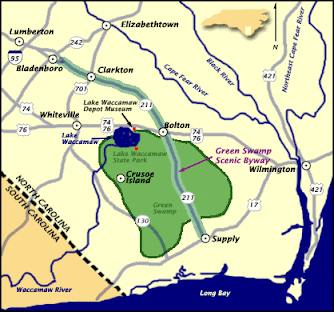Winter Camping
Huntington Beach State Park inspired my first blog post. If you haven't read it, there's tons of info about the layers of history, nature, and art. That initial trip I really enjoyed camping alone in the back of my mid sized SUV, listening to the waves crash on the beach and the critters stir in the woods. I immediately planned another trip. The first week of March 2019 I packed up my camping stuff and headed to Mom's house in Wilmington. Mama DJ was my OG camping partner but we hadn't camped together in almost 30 years, and I knew she'd love HBSP. She was a few months away from her 75 birthday and we planned on 'car camping' with no tents during winter. Yes, this is the land of the palm tree, but it still gets cold, so I prepared for anything. (Not my first cold weather camping.) The advantage of campsites that are set up for RV camping is that there is plenty of electricity. I reserved the site I'd camped in previously #13, Monday through Friday. We had no intention of 'roughing it' so our packing list was extensive. Our two vehicles were full. Pillows, sheets, comforters, four twin sized air mattresses and pumps, rugs, tarps, tapestries, table cloths, curtains, bug netting, lanterns, Christmas lights, clothes lines, extension cords, power strips, coffee maker, space heater, fire wood, camp chairs, food and beverages, and some other stuff I'm sure I've forgotten. We drove down Monday morning and ate lunch at Key West Crazy's in Little River, stopped by to visit Randy, and got to the park in time for 2 pm check in. We set up our site and walked the beach to the castle. We had clear weather forecast for at least the next 24 hours.
We set up our cars as our bedrooms, using fabric as car curtains for privacy and an extra layer of insulation. I hoisted two large tarps above our cars and ran the lines for the walls I planned to put on for any bad weather. We had a large tarp runner and throw rugs to keep our feet relatively clean and dry. I hung a large paper lantern above us and a big white dream catcher I'd made. The two extra air mattresses we used as a sofa by the fire.
 |
| This is our campsite before the winter weather set in. |
It was a beautiful night. It was so quiet. We walked on the beach, saw not a soul, and then returned to our site and settled in to our cozy beds. The waves crashed on the beach. It was warm enough not to worry about weather proofing. It was perfect.


 The next day we woke up, made coffee and walked to the beach. We packed a snack lunch to eat at Atalaya. It was still sunny and warm. We toured the interior of the castle and ate lunch outside in the sun. I knew Mom would love it, the wrought iron accents are her favorite color! As we strolled from room to room I read her the description and we talked about what went on back then in each space. After our walk I decided to prepare the site for bad weather. I added tarp walls to our homemade two car tent. I used a shower curtain to add a sky light section that would let in light and created a front wall that opened facing the fire to let in the heat, of course we had a space heater going between our two cars. I lined the inside of the tent with fabric and tapestries all the way to the ground.
The next day we woke up, made coffee and walked to the beach. We packed a snack lunch to eat at Atalaya. It was still sunny and warm. We toured the interior of the castle and ate lunch outside in the sun. I knew Mom would love it, the wrought iron accents are her favorite color! As we strolled from room to room I read her the description and we talked about what went on back then in each space. After our walk I decided to prepare the site for bad weather. I added tarp walls to our homemade two car tent. I used a shower curtain to add a sky light section that would let in light and created a front wall that opened facing the fire to let in the heat, of course we had a space heater going between our two cars. I lined the inside of the tent with fabric and tapestries all the way to the ground.

As the day progressed the cold front rolled in. It got wetter, grayer, and decidedly colder. We gave up on keeping a fire going in the rain and closed the front flap. Thankful for our heater and endless coffee, we settled in to our camp chairs and listened to the rain.
The next day it cleared enough for us to venture out. We took a walk at low tide and found an abundance of crustaceans and corals. We left two sweet potatoes wrapped up on the grill over the hot coals. After the cold walk it was the perfect hot meal, butter, cinnamon, and sugar, yum! The weather stayed cold and drizzly most of the time but we were warm and dry in our tent.
We were prepared for winter temperatures and rain, so we still had a great time and I knew then I wanted to try to keep coming back as often as possible and hopefully bring my future family. My next trip would be at a 'primitive' site with my twin sister. Oh yeah and I was finally pregnant. LOL. I'll post about that trip soon.




















































